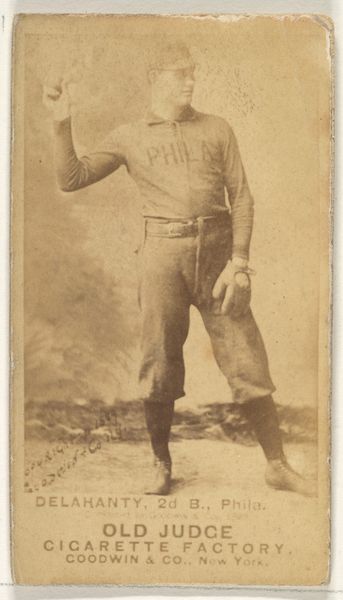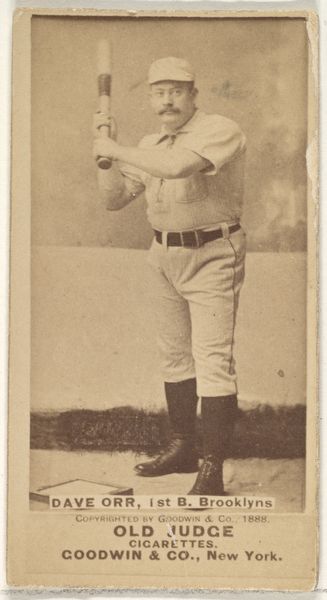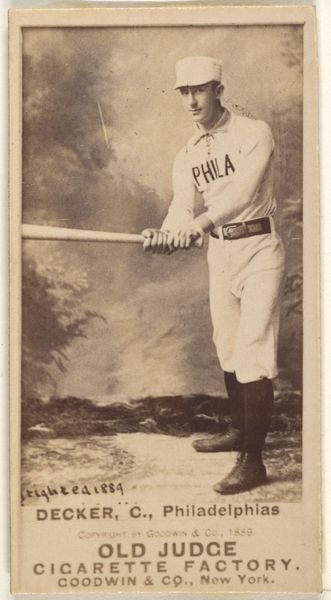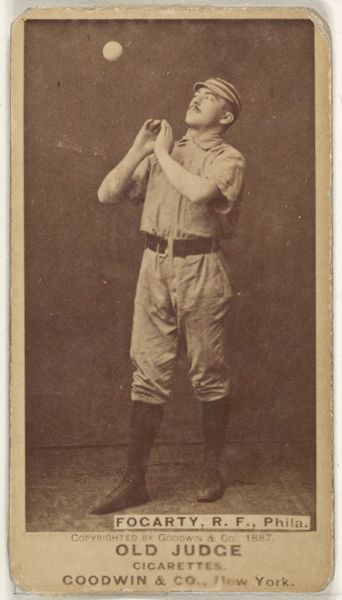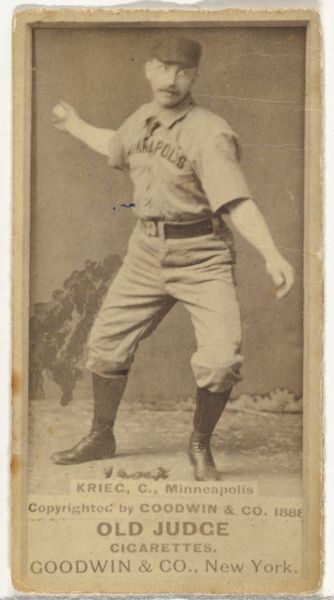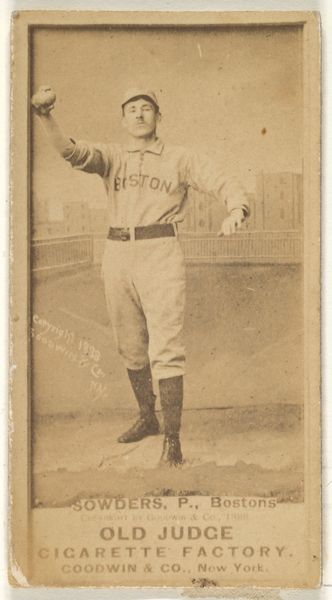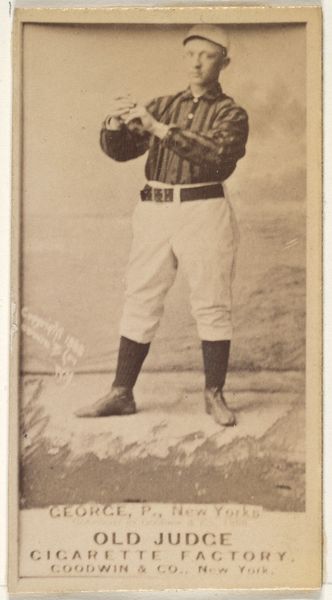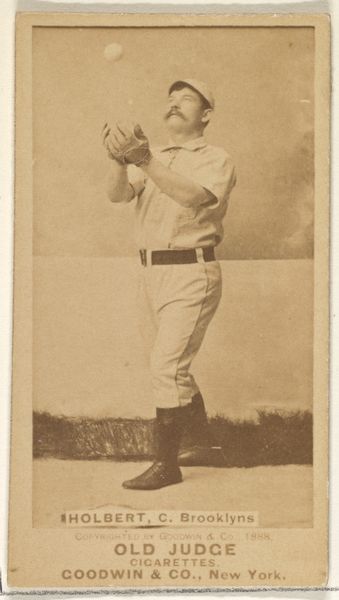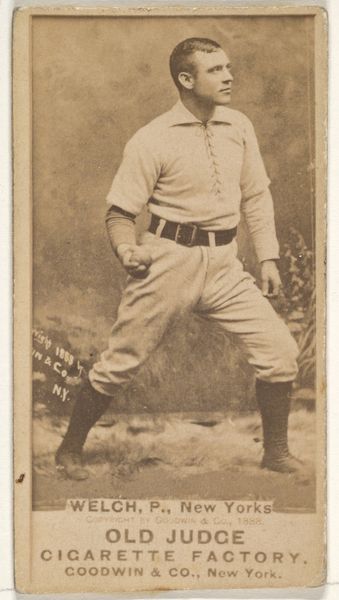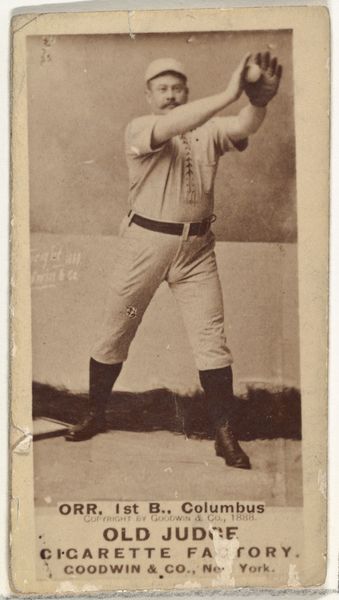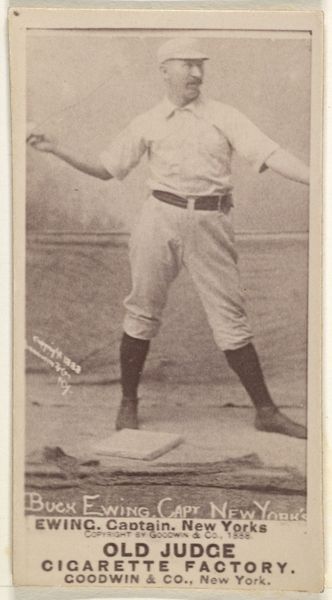
Decker, Catcher, Philadelphia, from the Old Judge series (N172) for Old Judge Cigarettes 1887 - 1890
0:00
0:00
drawing, print, photography
#
portrait
#
drawing
# print
#
baseball
#
photography
#
men
#
athlete
Dimensions: sheet: 2 11/16 x 1 3/8 in. (6.9 x 3.5 cm)
Copyright: Public Domain
Editor: So, this is "Decker, Catcher, Philadelphia" from the Old Judge series, created by Goodwin & Company sometime between 1887 and 1890. It’s a print, a photograph actually, used as a cigarette card. There's something very staged and posed about it, though the athlete is supposed to be caught in motion. What do you see in this piece beyond the surface image? Curator: Beyond the image, this card becomes a fascinating artifact reflecting the cultural landscape of the late 19th century. Think about it: commodifying athleticism to sell cigarettes. This immediately begs questions around capitalism, the rise of consumer culture, and the idolization of athletes, which often intersected with ideas of masculinity and national identity. What power dynamics are at play here? Editor: Power dynamics? Because it’s selling something? Curator: Exactly. Who benefits from this transaction? Certainly not Decker himself, at least not directly. His image is being used to move product. It speaks to the exploitation inherent in early advertising. Also, let’s consider the demographic targeted by these cards – primarily white men. How does this shape our understanding of the prevailing social hierarchies? Do you see this reflected in the portrait itself? Editor: Now that you mention it, I see the way he’s posed – very proper, almost stoic – contributes to a specific image of masculinity that might have resonated at the time. The image certainly seems idealized. Curator: And how does the baseball setting inform the discourse on race? Considering who was and wasn't playing baseball professionally during the late 19th century adds a crucial layer to this analysis, highlighting issues of exclusion and access. What does it mean to see an image that’s coded in a specific way based on factors that the image may try to obscure? Editor: That’s something I hadn't considered – the deliberate construction of the image. I'm beginning to think about this card much more critically now. Curator: Precisely. It’s not just a baseball card; it's a historical document ripe for deconstruction.
Comments
No comments
Be the first to comment and join the conversation on the ultimate creative platform.
